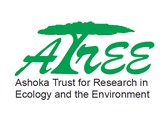Any and all opinions expressed in this newsletter are solely those of the author(s) and do not reflect the opinion of ATREE.
Centre for Excellence in Conservation Science
Royal Enclave,Srirampura,Jakkur Post
Bangalore-560064
Telephone: 080-23635555 (EPABX)
Fax : 080- 23530070
The one ecosystem that maintains
substantial biodiversity outside the 'forest' or
the 'Protected Area' is wetlands. In the
Tamiraparani basin which straddles the
districts of Tirunelveli and Thoothukudi of
Tamil Nadu, many such wetlands have been
conserved by the local peoples primarily,
perhaps, due to their utilitarian
values. Apart from using it for
irrigating agricultural land,
wetlands has many other uses
– lotus from the wetland is used
in religious ceremonies, fish is
harvested by contractors and
local traders, firewood and
timber is also harvested,
certain varieties of grass and
sedges are collected for mat
weaving, silt is collected for
agriculture and the wetlands
are used as pasture lands once
they dry up. For long, the way
wetlands were used did not
often conflict with the
biodiversity that they harboured and hence
the birds and wetland plants have co-existed
with human use. This may not be such a
happy story for long as wetlands now face
different kinds of threats primarily from
developmental pressures such as land
conversion. For example, the new bus stand
in Tirunelveli stands on what was once part of
a wetland and currently, what remains of the
wetland is the confluence of sewage from the
city. In Ayan Singampatti village, the wetland has been encroached with paddy fields and
the one in Pappankulam plays host to the
garbage from the granite quarry. The
frequent dynamites that go off in such
quarries make sure that Diwali is celebrated
all year keeping the birds away. Pattarkulam,
a wetland in Kallidaikurichi is strewn with
chicken waste and garbage. In most
wetlands in Tirunelvelidistrict, lotus
collectors are now using fertilizers like urea to
increase the harvest. Hunting parties
frequent Perungulam lake targeting pelicans.
Some species, like the pond terrapin, even
have a well-knit market for it to be traded.
Even mongooses in dry wetlands are not
spared as they are hunted either for their
meat or for their fur. Trees that stand in
wetlands face harvesting, which is unavoidable as they were planted by the
forest department to be auctioned and
harvested. Regardless of the threats, there
have been instances when wetlands have
triumphed despite odds. In Pudur, a
cardboard factory was letting out its effluents
into the wetland causing a stench and
change in colour. After stiff
resistance from local villagers
the factory has now stopped
polluting the wetland. But such
examples are rare. A wide
range of stakeholders need to
take concerted efforts to
conserve wetlands. Since the
control of many of these
wetlands lies with the Public
Works Department, the
department needs to have a
strong action plan to maintain
and manage these wetlands.
In some villages, funds from
the Mahatma Gandhi National
Rural Employment Guarantee
program are being used to clear wetlands of
weeds. Such opportunities should be
explored to help in planting saplings and
maintaining trees in and around the
wetlands. Effective replication of such well-
intentioned efforts at a larger scale could help
conserve and secure the future of wetlands
which could be beneficial for both
biodiversity and human well-being.
Editorial Team
Editor: Allwin Jesudasan
Associate editor: Rajkamal Goswami
Editorial Review: R. Ganesan, M. Soubadra Devy, T. Ganesh
Design and presentation: Kiran Salagame
A S H O K A T R U S T F O R R E S E A R C H I N E C O L O G Y A N D T H E E
N V I R O N M E N T
The changing dimensions of wetlands in Tamirabarani river basin
- Allwin Jesudasan and Mathivanan M
If you have any suggestions or comments please let us know through the boxes below






